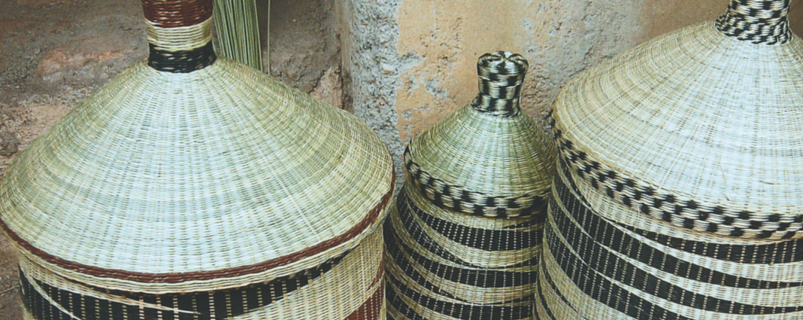Reg 28 Africa allowance: a missed opportunity for pension funds

How institutional investors could benefit from their 5% Africa allocation
The last year has been extremely difficult for African markets, says St.John Bungey, CEO for Sanlam’s Africa Investments. The strong dollar and collapse in commodity prices have cut a swathe across the continent’s markets and asset prices, tarring everyone with the same brush. Regardless of country specifics or whether a commodity exporter or importer, most African stock markets have fallen in excess of 30%. Africa is now down 30% over 12 months in US dollars. Both African markets and currencies have fallen hard (Africa has fallen harder than frontier markets, which have in turn fallen harder than emerging markets).
As a result, it could be plausible for pension fund trustees and other allocators of institutional capital to be congratulating themselves on not having been exposed to African markets. However, they may have missed out on a lucrative opportunity.
What are the implications of a weaker rand?
In the context of a weaker rand and relative growth in the value of offshore assets as a result, some South African retirement funds now have more money overseas than their offshore allowance permits. The Reserve Bank gives these funds 12 months to bring money back and this could see a sum in the region of $16 billion flowing back into South Africa – the approximate equivalent of 6% of GDP (the 2015 current account deficit was just 4% of GDP) – over the next year (Charlie Robertson, Renaissance Capital, 2016).
We believe there may be an alternative to repatriating all your excess offshore cash back to South Africa. Retirement funds have a 5% allocation they can make to Africa, over and above their 25% offshore allocation. By utilising this 5%, investors still get the benefit of the rand hedge as investment portfolios are dollar-denominated.
For most trustees and allocators of pension fund monies, the conventional wisdom seems to be that South Africa is an emerging market and part of the African continent, so any allocations outside of South Africa should be away from similar-risk countries and into supposedly safe-haven, developed markets. For this reason, Africa is often overlooked by South African retirement funds, and few have fully utilised this allocation, missing out on the opportunity. In fact, the rest of Africa has a distinctly different risk profile and should be evaluated on a more region-specific basis.
Like so many investment matters, it’s not quite that simple. To use investment speak, “The right asset allocation decision is not necessarily the best use of your allocations permitted by Regulation 28.”
What does this mean?
The disconnect between GDP and stock markets
To some degree, as allocators of retirement fund assets, we are guilty of the same generalisation that allows foreigners to see Africa as “one country” and treat all its markets (including South Africa) in the same way. We tend to see Africa purely as a listed equity opportunity and the decision to utilise Regulation 28’s 5% African allowance as part of our equity allocation.
The reason for this, we suspect, is that investing in Africa has been positioned to South African institutional investors as a way of capturing the “African growth story” or “Harnessing Africa’s demographic dividend”, both of which imply capturing some level of GDP growth. The problem is that there is a disconnect between the continent’s GDP growth and African stock markets’ performance, which have traditionally been seen as representative of this growth. As some recent research by one of South Africa’s leading consultants illustrated, Sub-Saharan stock exchanges are a poor reflection of the continent’s economic growth.
More simplistically put, there is more to investing in Africa than listed equities. There is a whole array of other asset classes from fixed interest to private equity. Like anywhere else in the world, each asset class has its own risk and return characteristics, along with managers who are better and worse at extracting returns. This tends to define them, more so than their geography. Having said this, managing property or fixed interest on the continent has its own challenges and unique opportunities.
How you could have profited from Africa’s fall
To illustrate our point numerically, had one avoided allocating to African equities (using the S&P Africa as a proxy), then the attribution would have been roughly 2% return (a 31% fall in African equity markets, offset by a 33% depreciation in the Rand). By contrast, had one decided to allocate to African Property, which was down about 1.5% in US dollars (a 5.5% fall in NAV plus a 4% dividend) your attribution would have been a positive 31.5% in Rands. Finally an allocation to the Sanlam Africa Focused Credit fund would have delivered an attribution of 4% in dollars and a handsome 37% in Rands. This would have added alpha of approximately 1.85% to your entire pension fund.
Conclusion
Africa as an investment destination is often overlooked by South African retirement funds and allocators of capital. There are a number of reasons, primarily the recent decimation of African equity markets and currencies. Blindsided by the poor performance, few have recognised the greater opportunity in utilising their 5% allocation to Africa and the associated rand hedge benefits.
Now may be a good time to take a fresh look at your asset allocation and understand all the levers available to maximise these outcomes.
Please note that Sanlam Africa Credit Investments Limited (SACIL) is a Mauritian-based fund and only available to institutional investors.





Comments are closed.